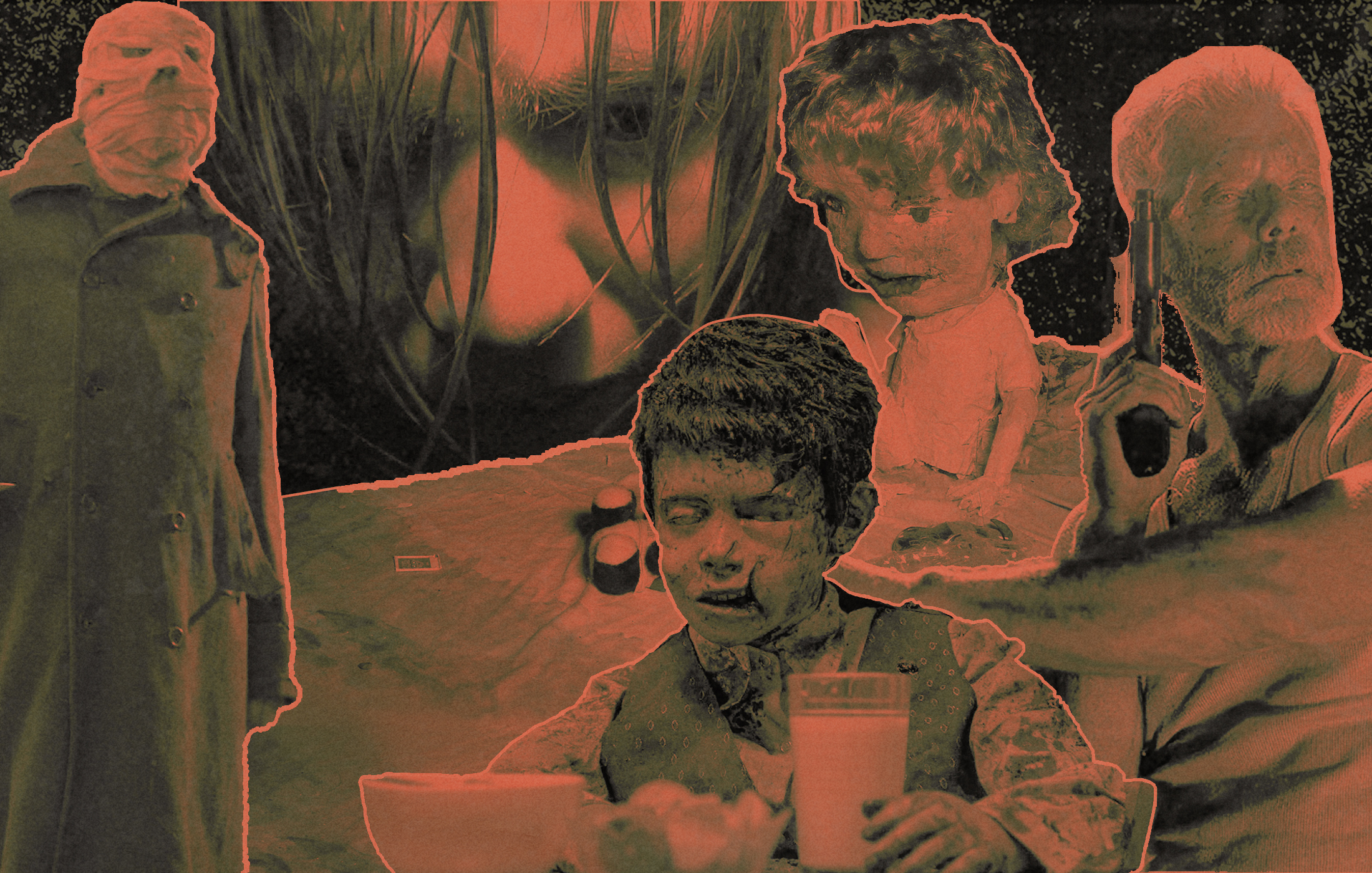If there’s one thing every Spanish-speaking country in the world can do, it’s tell a good horror story. There are no shortage of ghost stories to pull from and no dearth of terrifying creatures to think about as you fall asleep. With Halloween just a few days away, it’s time to highlight some of the best Latin horror films of the last few decades. There’s a bit of everything here, from ghosts to masked killers to rabid zombies, and established classics next to some underrated gems.
“Aterrados” (“Terrified”)
Argentine director Demián Rugna’s “Terrified” has already earned a reputation for being one of the scariest movies ever made. It’s almost impossible to oversell Rugna’s film, which follows the classic horror movie formula of sticking a group of people in a creepy house and letting things go bump in the night.
The film quietly premiered in 2018 on the horror streaming service Shudder and has since become essential viewing for fans of the genre. With a sequel already on the way, as well as an American remake produced by Guillermo del Toro, there’s still time to be the cool friend who shows everyone a movie that will really freak them out.
“El Espinazo del Diablo” (“The Devil’s Backbone”)
Speaking of Guillermo del Toro, his classic 2001 film holds up, 22 years later, as a truly great horror movie. The premise is simple enough: a 12-year old boy is sent to a haunted orphanage after his father dies in the Spanish Civil War. However, like all of del Toro’s earlier films, “The Devil’s Backbone” is a deeply political story about freedom fighting Republicans (not those ones) fighting off the fascist Nationalist faction at the very start of what would become World War II.
Nobody does twisted fairy tales quite like Guillermo del Toro, and “The Devil’s Backbone” is definitely a scary movie. It just happens to also be a thought-provoking, heartfelt, and beautiful story. If you’re a fan of the director’s more popular films, like “Pan’s Labyrinth” or “Hellboy,” you will love “The Devil’s Backbone” just as much.
“[REC]”
It didn’t take long for found footage movies to fall out of favor with audiences. The genre goes back to 1980’s “Cannibal Holocaust,” which framed its story around reels of actual found footage, which had been recovered from a documentary crew who died while filming an isolated indigenous tribe in the Amazon rainforest. Then, in 1999, “The Blair Witch Project” became the most popular found footage movie ever made, grossing nearly $250 million on a budget of just $500,000.
Naturally, it didn’t take long for Hollywood to wise up. By the mid-to-late aughts, found footage movies were all the rage. We have “Paranormal Activity” to thank, which dropped the production budget down to just $15,000 and grossed nearly $200 million. However, two years before “Paranormal Activity” hit theaters (and the same year it was actually filmed) 2007’s “[REC]” terrified Spanish-speaking audiences. After someone in an apartment building falls ill with a mysterious virus, the building is quarantined with all of the residents – and the reporter who’s there to document them – still inside.
It turns out that this virus turns its host into an especially aggressive type of zombie. Before long, the residents are fighting for their lives against a growing number of infected, who begin turning everyone in the building, one by one. “[REC]” is an immersive experience, offering no respite from a constant barrage of horror and carnage.
The decision to present the film as found footage works extremely well because nobody in front of or behind the camera ever feels like a professional actor or filmmaker. There’s something so realistic about “[REC]” that many films have tried, and failed, to recapture. The film was inevitably remade in America as “Quarantine.” It turned out decent enough, but it has nothing on the original.
“La Casa Lobo” (“The Wolf House”)
It’s hard to say which film on this list is the best, but we can confidently say that “The Wolf House” is probably the most impressive. This stop-motion nightmare of a movie was created over the course of five years and follows a young girl named Maria who escapes from the brutal Colonia Dignidad fascist cult in 1970s Chile. Accompanied by two pigs who slowly transform into human beings named Ana and Carlos, the three escapees find an abandoned home in the woods.
Much like our previous entry, “The Wolf House” is so immersive, it can make one feel like they’re actually having a waking nightmare. It’s a claustrophobic, violent, and occasionally repulsive movie that is completely unafraid to drop viewers inside a disorienting sea of images and let them drown there. At less than 75 minutes, “The Wolf House” is the shortest entry on the list, even if watching it can sometimes feel like an eternity. But we mean that in a good way. There’s really just nothing else like it.
“La Llorona”
No, we’re not giving a shout out to “The Curse of La Llorona,” which is a terrible movie. Nor are we going to be saying anything about “The Legend of La Llorona,” which is somehow an even worse movie. We’re here to talk about 2019’s “La Llorona,” which is awesome. If there’s one thing Latin filmmakers know how to do, it’s weave politics into their horror movies. “La Llorona” is no exception. The film follows a Guatemalan general, on trial for a genocide campaign that targeted the Mayan people in the 1980s.
The film rips its story right from the pages of history, basing its central character on a real Guatemalan dictator named Efraín Ríos Montt. He did, in fact, lead genocidal campaigns during his brief term as de facto president between 1982 and 1983. He was also tried and convicted for his crimes in 2013, but his 80 year sentence was overturned by the country’s Constitutional Court. Montt remained a free man until his death in 2018, at the age of 91.
“Los Cronocrímenes” (“Timecrimes”)
Before he became more popular with American audiences after directing English-language films like “Colossal” or “Pooka!,” Nacho Vigalondo’s “Timecrimes” put him on the map. For the most part, there are time travel movies and there are slasher movies. The two genres tend to not cross paths. But “Timecrimes” is a bit of both. The 2007 movie is now a cult classic among horror fans, joining the ranks of movies like 2003’s “High Tension” and 2008’s “Martyrs” as a non-English horror film that makes everyone who sees it ask, “What did I just watch?”
The film opens on a man named Héctor, fleeing from a masked killer he encounters in the forest near his home. Héctor hides in a nearby building and finds a walkie-talkie. The person on the other end is a scientist who has set up a lab in the building. He tells Héctor he’ll be safe inside a nearby mechanical device that turns out to be a time machine.
Héctor soon realizes he’s traveled one hour back in time. However, he still exists in the present he left behind. Before long, the Héctors are pitted against each other as the truth behind their predicament comes to light. But we’ll stop there – the less you know, the better.
“El Orfanato” (“The Orphanage”)
If we’re going scene for scene, scare for scare, “The Orphanage” might be at the top of the list. Set in an orphanage that focused on housing disabled children, the film introduces Laura, who once lived at the orphanage and returns years later with her son to show him where she comes from. Instead of the cathartic experience she was hoping for, her son ends up befriending the ghost of a blind girl whose soul continues to wander the premises.
If this all sounds like a Guillermo del Toro movie, it’s worth noting that he is credited as an Executive Producer, and even has a cameo. However, “The Orphanage” distinguishes itself from del Toro’s work by putting all of its energy into the scares. Bone-chillingly scary!
“As Boas Maneiras” (“Good Manners”)
We’ll close things out with “Good Manners,” a weird and unpredictable story about an inexperienced nanny named Clara who takes the only job she can get, working for a single mother-to-be. Her new employer, Ana, seems normal enough at first. However, Clara spots Ana sleepwalking around the house at night. After Ana almost bites Clara’s lip off after kissing her unexpectedly, she begins to question who (or what) is the father of Ana’s unborn child.
“Good Manners” falls closer to the drama side of the spectrum, but it isn’t afraid to dish out some undeniably scary moments. More than just being a great horror movie, “Good Manners” is a great movie, period. It considers some complex and relevant themes, including class disparity and the patriarchal stigma around single motherhood, while being a movie in which someone gives birth to a literal werewolf.
Josef Rodriguez is a writer, filmmaker, and film critic living in New York City.









